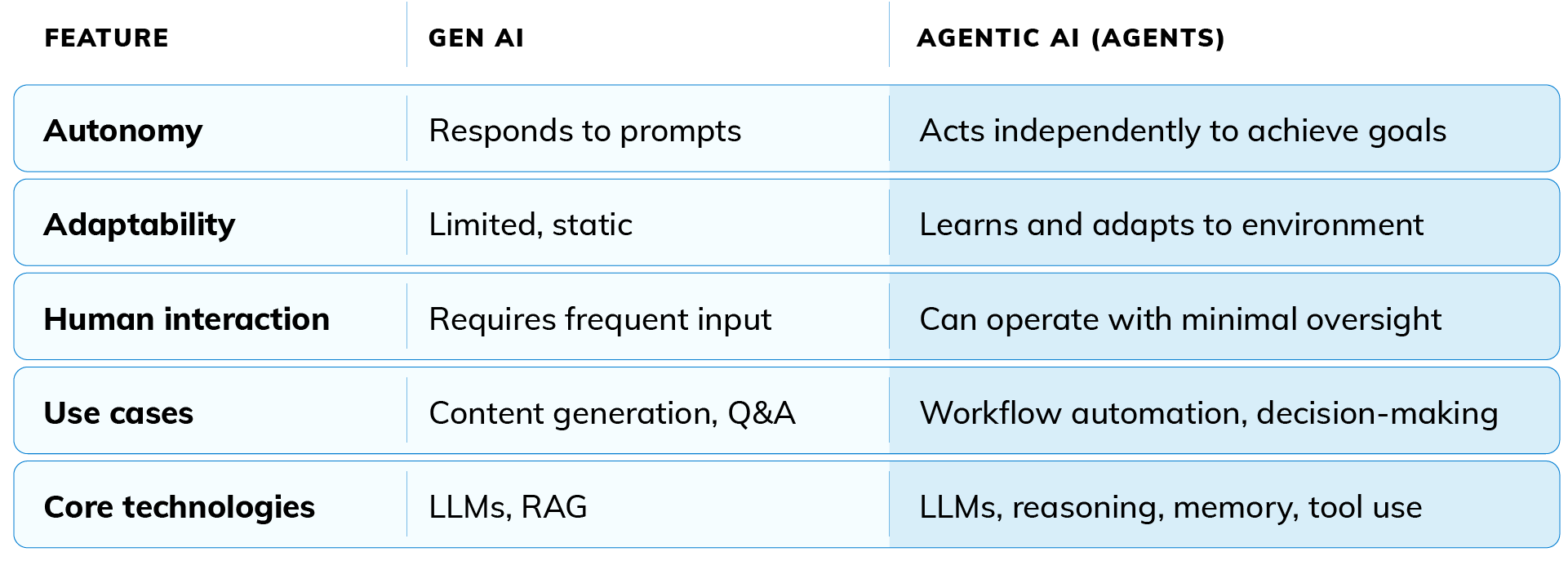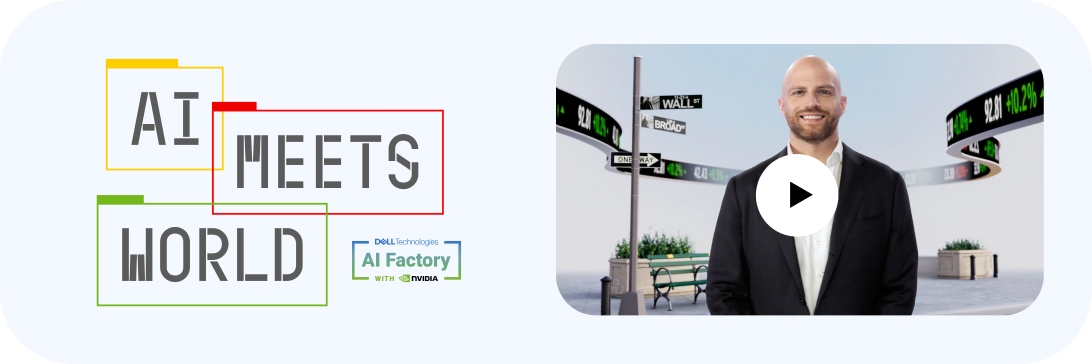How Agentic AI Will Reshape the Future of Work
AI agents are poised to transform the digital world. Prepare your organization for the coming disruption.
You can’t talk about AI these days without mentioning agents, those whip-smart pieces of software treated with a great deal of excitement and confusion.
Most AI experts agree that agents will increasingly manage most discrete business functions or even operate enterprises’ entire business processes. Many of these experts believe agents will significantly change our working lives.
Regardless of where you land on these emerging stewards of the digital era, 80% of organizations say AI agents are the top or a high priority compared with other AI initiatives, according to Enterprise Strategy Group research.
Yet what exactly qualifies as an agent is the subject of much debate. Agents are often conflated with generative AI (GenAI). Though not classified as GenAI, many agents do leverage large-language models (LLMs) for reasoning and natural language processing.
Let’s define agents and discuss how they fit into the future of work—with and without humans.
What Agentic AI Is—and Isn’t
GenAI technologies such as chatbots create content based on prompts that people input into trained LLMs and other AI models. These tools are static, accessing and creating content from the information they were trained on.
AI agents, on the other hand, possess autonomy or agency, or the ability to reason and act to achieve goals they were designed to achieve.
Equipped with the power to reason and perceive their environment, as well as the ability to learn and adapt, agents can be given a goal and then independently carry out complex tasks and solve problems to reach that goal, often with little to no human interaction.
An AI agent is typically composed of a core, including a persona with goals and tools they can access to execute their tasks, plus short, medium and long-term memory, as well as reasoning technology.
Agents can query other systems through API calls, or “put them to work.” Many can work with other agents in agentic AI systems.
This chart highlights the different characteristics of GenAI and agents:

What an Agentic Enterprise Looks Like
It helps to view agents as digital employees occupying seats, so to speak, within organizations.
An agent directed to build a marketing campaign might begin by analyzing customer data and preferences, and then use an LLM to create content and analyze social media to refine its approach. An HR agent could automate the process of screening resumes for fit before scheduling interviews between hiring managers and candidates.
A software developer agent might create new application features, fix bugs, merge changes and review code on the fly. For example, InstaDeep’s agentic AI solution accelerates electronics design by 10x. Another agent may be responsible for managing a supply chain, tapping into other information sources to predict demand and coordinating with suppliers to ensure delivery of goods.
Theoretically, almost any role a human occupies may be augmented by AI agents that can scale with the business. What does this mean for humans in the workplace?
Agentic AI and the Future of Work
This is the single most important question—and the answer is both simple and complex. Simple because the human could potentially initiate and direct these agentic processes through a prompt box. Complex because this will upend how humans accomplish their daily workstreams.
For example, in a truly agentic enterprise, a human using a computer could communicate with an “orchestrator,” or manager agent, which then dispatches its agentic team to execute various tasks. The human could offer guidance and corrective measures to help the digital workers navigate tricky or unfamiliar situations that may arise.
Essentially, the human goes from being the “human in the loop” to the “human on the loop” that manages teams of agents. Humans aren’t simply part of the agentic process; they are supervising it. After all, how else will these agents know what good is supposed to look like?
“The ultimate measure of success is, does the human being trust that it is doing the right thing in the right way on their behalf? If that is not true, this technology will not be successful. If it is, it will be wildly successful,” asserts John Roese, Dell’s Chief AI Officer.
Of course, orchestrating teams of agents has its challenges, not the least of which is learning how to manage an agentic architecture. For example, 39% of organizations view implementing AI agents as a challenge to their security and compliance requirements, according to a survey by Enterprise Strategy Group.
In the meantime, organizations can begin planning for their agentic AI environments using some best practices. These include:
1. Assessing current workflows for potential automation with agents. Not every use case will require an agent, so intentional application is key.
2. Piloting agentic systems in low-risk domains. Don’t launch a ton of agents into production out of the gate. Low-risk domains, such as customer service, where the bulk of action requires fielding inquiries, offer a great launch pad for agents.
3. Training staff to supervise and collaborate with agents. Again, human-on-the-loop is key. Without the human-AI collaboration, the agentic process breaks down.
As you embark on your agentic AI journey, be sure to start small and then scale, keep it simple and iterate while closely monitoring and managing your AI agents and attending applications and interdependencies.
Dell AI Factory With NVIDIA Fills Agentic AI Needs
As demand for agentic AI grows, organizations will require robust AI factories capable of serving and processing data and deploying and managing applications.
To support these requirements, Dell and NVIDIA have partnered to offer the Dell AI Factory with NVIDIA, a suite that incorporates AI-optimized infrastructure, accelerated computing solutions and services built to help customers quickly deploy and customize AI workloads—including agentic AI capabilities. NVIDIA NeMo microservices and NIM microservices provide developers with the tools they need to build and fuel agents.
“We’ve created an accelerated compute platform that allows developers to run AI models as cost-effectively as possible,” says Justin Boitano, Vice President of Enterprise AI at NVIDIA. “We take these open models and optimize them into a runtime we call NVIDIA NIM. That allows models to respond three times faster on average than they otherwise would—meaning you’re using less infrastructure and less power.”
As agentic AI influences the future of work, your IT infrastructure must evolve with it. Are you ready to take the next step?
Learn more about the Dell AI Factory with NVIDIA.

